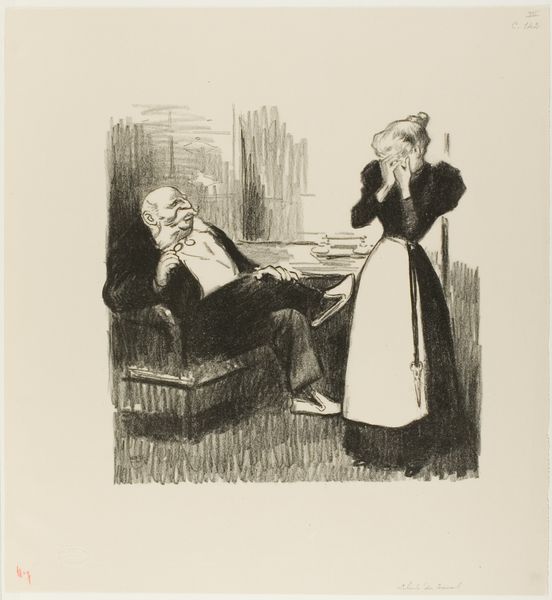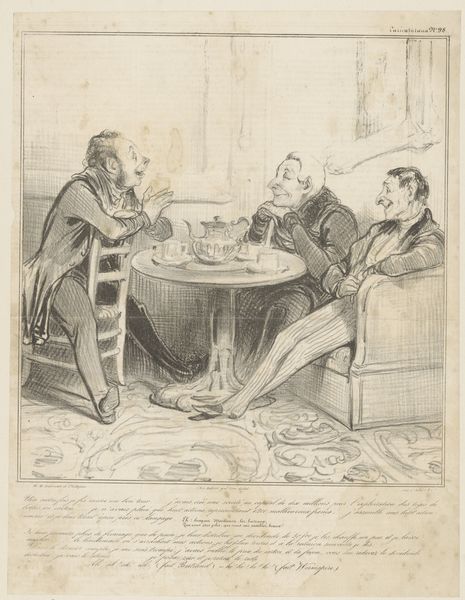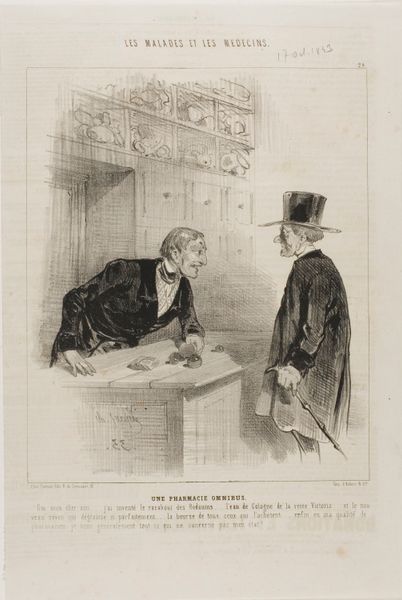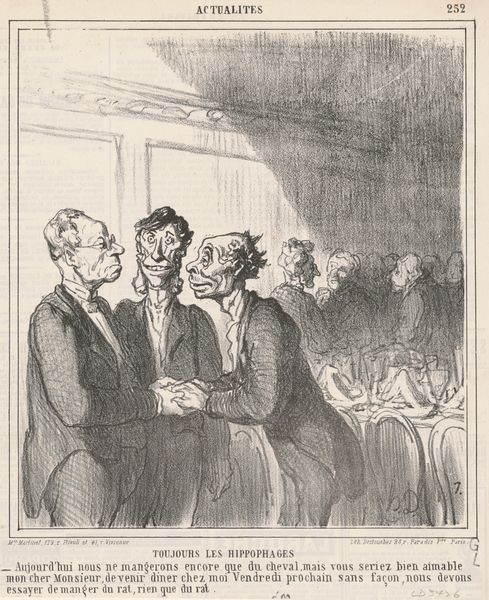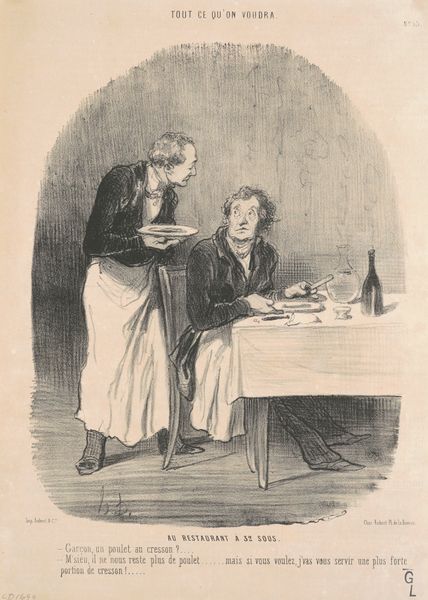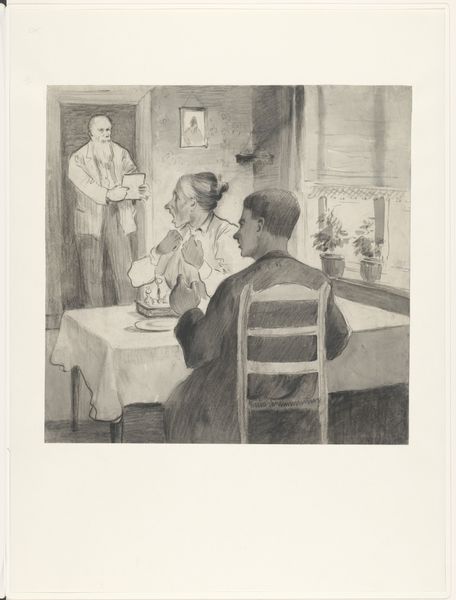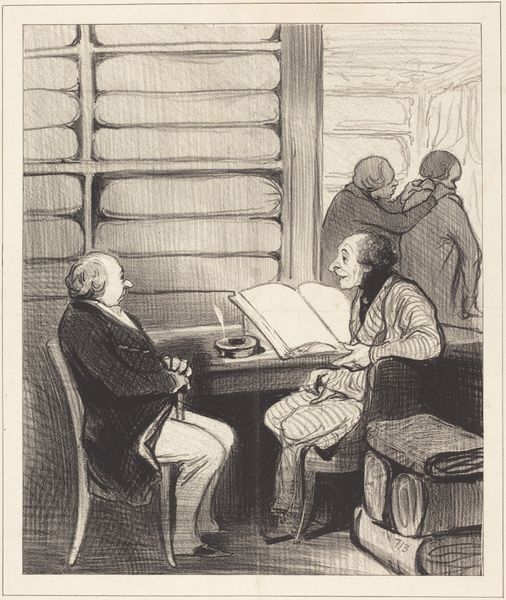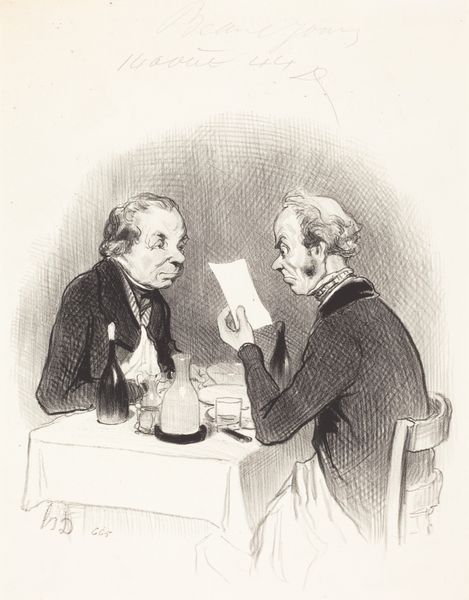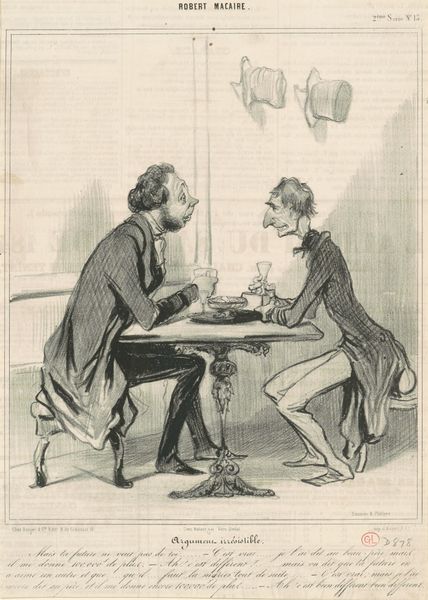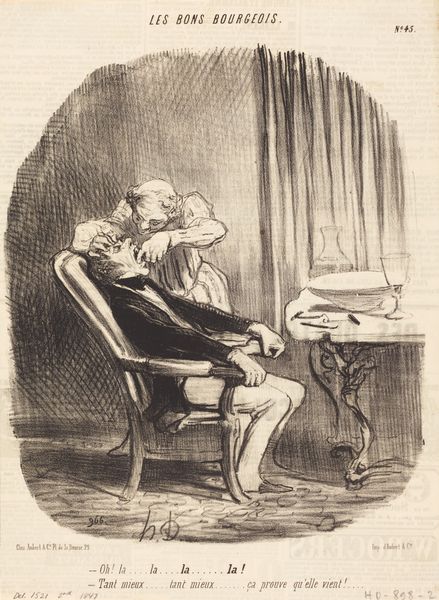
Copyright: National Gallery of Art: CC0 1.0
Curator: Honoré Daumier’s lithograph, "Au Café d'Aguesseau," created in 1846, presents us with a scene from the series "Les Gens de Justice"–a darkly humorous take on the world of law. My first impression is one of theatrical gloom. The composition feels crowded, with sharp contrasts adding to a sense of disquiet. Editor: As a lithograph, its production immediately grounds us in the mid-19th century world of print culture. We have to think about the processes and materials involved—the stone, the grease, the paper and the printing press. The material reality here is about reproducibility and widespread consumption. Curator: Indeed. Look at how Daumier masterfully utilizes the lithographic crayon to create a range of tonal values, which creates an illusion of depth and volume, further heightening the almost farcical narrative. The faces are rendered with grotesque yet incredibly precise lines. The foreground figure with his beefsteak and apples, pushes toward almost caricaturist forms. Editor: And those lines, scratched onto the stone, are suggestive of the precarious existence of those reliant upon the law and those responsible for its dissemination, distribution, and implementation. What we see reflected here is an ecosystem of print. I'm wondering how these depictions might act as social commentary about justice. Curator: Certainly! The dark hatching, for example, emphasizes the weight of the legal profession. We see how these professionals feed off the less fortunate and how they maintain and support an exploitative system. What at first reads like dark comedy exposes deeper social critique. Daumier uses formal artistic elements to amplify that satire, such as his use of exaggerated physiognomy for each character and distortion to make the diners in the scene unappealing to the viewer. Editor: It prompts reflection on how visual media such as a widely circulated image interacts with ideas of justice and social equity, or lack thereof, across the populace. We gain real insight into the artist's time. It is important to think of the cultural influence this imagery had on his viewership. Curator: It's fascinating how such a simple medium is deployed here in a way that still feels so resonant. The strength of the work stems from the artist’s commitment to this formal mode to express his narrative agenda. Editor: The lithograph invites us to really consider not only the hand of the artist but the machine and those workers that contributed to the dissemination of social imagery to a waiting world.
Comments
No comments
Be the first to comment and join the conversation on the ultimate creative platform.

